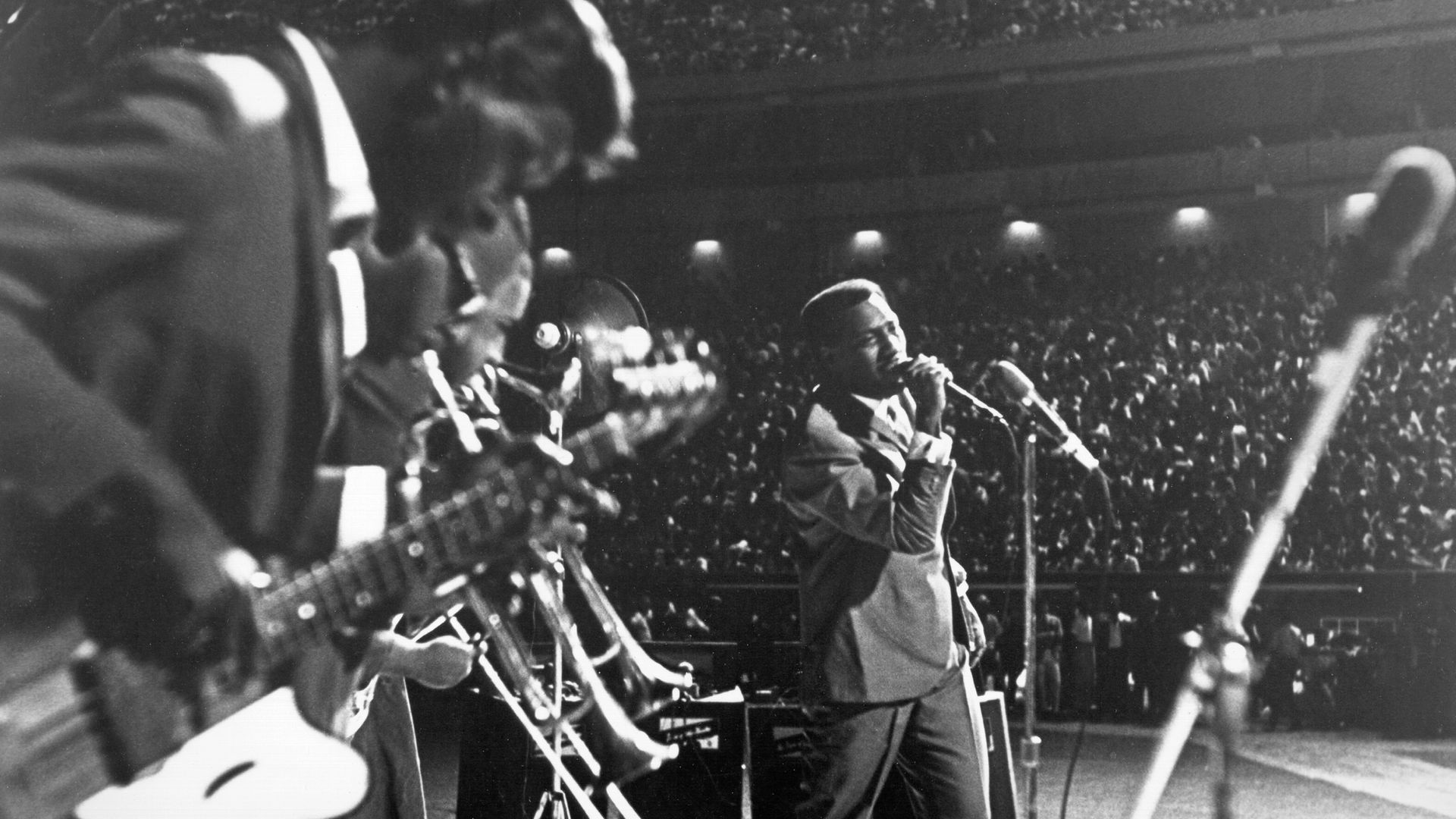
The Tennessean city is rightly synonymous with Elvis, but its musical heritage goes far further.
If Elvis had not succumbed to the effects of being the most famous person in the world in the summer of 1977, he would be celebrating his 86th birthday this week. He died in the city that was responsible for setting him on the path to fame, and today Graceland, eight miles south of the city centre, is the centre of a huge Elvis-focussed tourist trade.
But Memphis is more than just Elvis – although that would be enough – and the DNA of American music is full of Memphian markers. Soul, gospel and blues were all nurtured here as rural labourers flocked to this city in the post-war boom. They brought both the rural blues of the Mississippi Delta and the traditional spirituals of African Americans with them, and the music made in Memphis would chart the story of the American South in the second half of the 20th century.
The Memphis that the nearly 14-year-old Elvis found when his family moved there from Tupelo, 100 miles south west, was a place that seemed full of possibility. Downtown’s Beale Street was already a legendary place before the war – bandleader W.C. Handy, the ‘Father of the Blues’, having immortalised it in his Beale Street Blues way back in 1916.
By the late 1940s, Beale Street was a place where all of human life, black and white, could be seen. It was also where musicians honed their craft in its blues clubs and playing on the street, even if the city’s venues and amenities were all heavily segregated.
A more exciting place for a music-obsessed teenager is difficult to imagine and Elvis spent much of his time when he wasn’t pursuing his studies at Humes High School hanging out at Charlie’s record store on North Main Street.
It was in fact Elvis’ taste in records that made Sun Records’ Sam Phillips realise he had a unique musical talent on his hands. When the then 19-year-old truck driver suddenly struck up with Delta bluesman Arthur ‘Big Boy’ Crudup’s That’s All Right during a tentative recording session in the summer of 1954, it was the last thing Phillips expected to hear out of the mouth a young man reared on gospel and hillbilly. Suddenly the white artist with a blues attitude that he had been looking for had appeared fully formed in front of him.
Phillips’ Memphis Recording Service had opened on Union Avenue in 1950 and became Sun Records in 1952. The fledgling company had recorded Howlin’ Wolf, B.B. King and Ike Turner by the time Elvis walked in in the summer of 1953. Just three days after it was recorded, That’s All Right was played on Dewey Phillips’ WHBQ Red, Hot & Blue radio show – broadcast from Main Street’s Chisca Hotel and rare for playing music by both white and black artists – and it quickly became a local hit. Live appearances at Memphis’ Bon Air club and Overton Park Shell in the heart of the city were Elvis’ first as a recording artist.
I Forgot to Remember to Forget, with Mystery Train as its B-side, was Elvis’ last on Sun Records as he signed with RCA, released Heartbreak Hotel (1956) and was launched to national stardom. But with Carl Perkins’ Blue Suede Shoes, Johnny Cash’s first major hit I Walk the Line and Roy Orbison’s debut Ooby Dooby all also coming in 1956, and Jerry Lee Lewis’ Great Balls of Fire becoming a smash the following year, Sun was still just beginning. By the time Phillips sold up in 1969 popular music had been changed forever.

Despite Phillips’ vision of Sun as a place where both black and white musicians could record, it would be more associated with its white stars and it was the city’s Stax Records was the real home of black artists in Memphis. Despite being founded by whites and directly inspired by Phillips, Stax ended up being a petri dish for a raw and gritty black soul music that faced off against the polished acts over at Motown.
Founded as Satellite Records in 1957 by siblings Jim Stewart and Estelle Axton, the label found a home in the old Capitol Theatre on East McLemore Avenue in a poor area of the city in 1960 and father and daughter soul duo Rufus and Carla Thomas gave it its first hit with Cause I Love You that same year. The new ‘Stax’ name came in 1961 when the label also signed a distribution deal with Atlantic that soon brought this little local label to nationwide prominence.
The Stax roster was an incredible one, with acts like Sam and Dave and Eddie Floyd backed by house band Booker T & the MGs. They were central to the label’s sound, but it fell to Texan act King Curtis, the man behind the unforgettable madcap saxophone on The Coasters’ Yakety Yak (1958), to sum up the Stax sound on his Memphis Soul Stew (1967).
It was an ode to Memphis’ special musical alchemy whose spoken lyrics revealed its precise recipe: “Half a teacup of bass, a pound of fatback drums, four tablespoons of boiling Memphis guitars, just a little pinch of organ and a half a pint of horn.”
But Stax had one star act who stood above all others: Otis Redding. Redding was not quite 21 when he happened to find himself at Stax having chauffeured guitarist Johnny Jenkins to a session there.
In some leftover studio time he recorded These Arms of Mine, revealing his almost painfully sincere and plaintive voice, and he subsequently became both a recording and a touring sensation. A date playing San Francisco’s Fillmore inspired his signature song (Sittin’ On) The Dock Of The Bay (1967).
Days after recording it, Redding was killed in a plane crash. Stax lost its signature act and the following year they lost their deal with Atlantic, denuding the label of most of its artists.
The assassination of Martin Luther King at Memphis’ Lorraine Hotel also marred 1968 for Stax and all of Memphis’ black community, but in the ensuing riots the studios were left untouched, and the label grew fully into its role as a supporter of the civil rights struggle as the 1970s arrived.
Stax had always been notably racially integrated on both the business and studio side, but the gospel of The Staple Singers spoke directly to black empowerment on songs like Respect Yourself (1971), while Isaac Hayes, well-involved in the civil rights cause, emerged as Stax’s new star.
The Reverend Jesse Jackson released a series of his speeches on the label in 1971, as well as appearing at the Wattstax festival of the following year, held to commemorate the 1965 Watts Riots. He recited the poem I Am – Somebody in both cases, and its words “I am black, beautiful, proud/ And must be respected” was surely the subliminal message of Stax’s peerless output.
Whether it was Delta blues, Stax soul or the early rock ‘n’ roll pioneered by Sun, Memphis’ music has undeniably influenced everything that came after it, and as Jerry Lee Lewis put it on his 1966 song: “It makes you tremble and it makes you weak/ Gets in your blood, that Memphis Beat.”
MEMPHIS THE MYTH
Beale Street’s Memphis Rock ‘n’ Soul Museum publishes a list of songs mentioning the city, which currently numbers over 1,200. But only a few deal with the city as an almost sacred place. Paul Simon’s Graceland (1986) billed it as a place of pilgrimage where “We all will be received”. But Marc Cohn’s Walking in Memphis (1991), namechecking W.C. Handy, Al Green and Elvis, and famously singing of “walking with my feet ten feet off of Beale” is the ultimate engagement with Memphis as myth.











